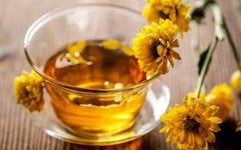Introduction: Learn about clearing heat and detoxifying herbs, and master the characteristics and clinical applications of Honeysuckle and Forsythia.
After studying heat-clearing and fire-draining herbs and heat-clearing and damp-drying herbs, today we will begin learning about clearing heat and detoxifying herbs.
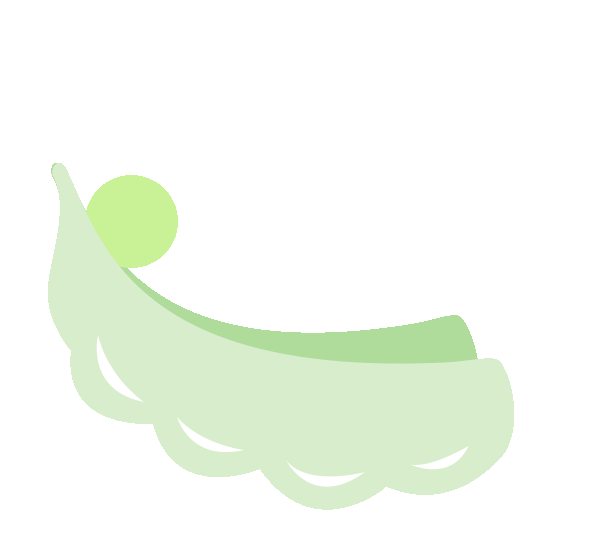 Clearing Heat and Detoxifying Herbs
Clearing Heat and Detoxifying Herbs
Clearing heat and detoxifying herbs primarily function to clear heat and detoxify. The term ‘toxins’ is broad; in the context of exterior-releasing herbs, we mentioned that ginger can resolve various toxins, referring to the toxicity of food and drugs.
However, the ‘toxins’ we are discussing today refer to ‘heat toxins’ and ‘fire toxins’, which are understood as heat excess manifesting as fire, and fire manifesting as toxins. Clearing heat and detoxifying herbs mainly treat heat excess leading to abscesses and sores characterized by redness, swelling, heat, and pain. They can also treat warm diseases, heat toxin dysentery, sore throat, burns, scalds, and even cancer.
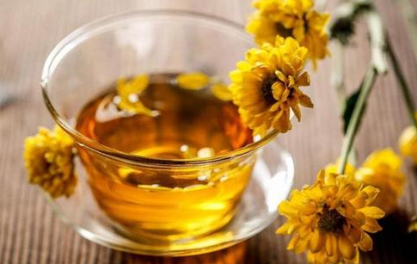
Among these, abscesses and sores are similar to purulent infections in Western medicine, which can be classified into external abscesses and internal abscesses. External abscesses, such as those on the breast, are called breast abscesses, while internal abscesses, such as those in the lungs or intestines, are referred to as lung abscesses and intestinal abscesses, respectively.
Generally, any clearing heat and detoxifying herb can treat heat toxin abscesses. Previously, we learned about Burdock seed (Niu Bang Zi), Chrysanthemum (Ju Hua), and Schizonepeta (Sheng Ma) in the context of dispersing wind-heat herbs, and Gardenia (Zhi Zi) in heat-clearing and fire-draining herbs, all of which can be combined to treat heat toxin abscesses.
This section on clearing heat and detoxifying herbs contains many herbs, and we will introduce them according to the diseases they treat. First, let’s learn about Honeysuckle and Forsythia.

Honeysuckle
Honeysuckle is made from dried flower buds or freshly opened flowers, and it is also known as Jin Yin Hua (忍冬花).
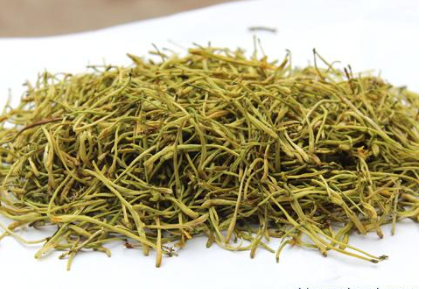
Why is it called ‘Jin Yin’? Because the leaves of Honeysuckle are evergreen, meaning they do not all fall off at once but drop alternately, so they remain green even in winter, hence the name ‘Jin Yin’, which implies enduring the cold winter climate.
Additionally, when Honeysuckle flowers, there are two flowers growing together in the axils of each leaf, which is why it is also called ‘double flower’.
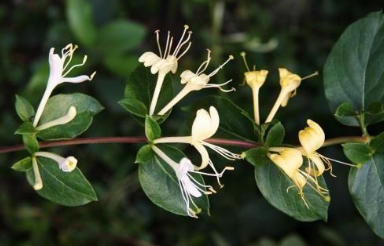
Honeysuckle can clear heat and detoxify, and is effective in treating warm diseases at various stages: the Wei stage, Qi stage, Ying stage, and Blood stage, but its significance varies at different stages.
In the Wei stage, it can both clear heat and detoxify, and disperse wind-heat, with the representative formula being Yin Qiao San (银翘散);
In the Qi stage, it can clear heat and detoxify, as well as clear heat and drain fire;
In the Ying and Blood stages, Honeysuckle can clear heat and detoxify, and also enter the Qi and Blood levels, with the representative formula being Qing Ying Tang (清营汤).
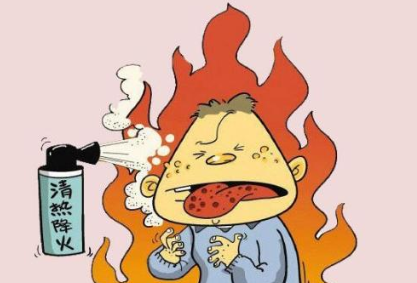
In addition to treating warm diseases, clearing heat and detoxifying herbs can also be used for abscesses and sores, whether internal or external, such as lung abscesses and intestinal abscesses. Both internal and external applications can promote the reduction of redness, swelling, and pain in abscesses and sores.
Honeysuckle can also cool the blood and stop dysentery, treating heat toxin dysentery, often combined with Huang Lian (黄连) and Bai Tou Weng (白头翁).
Honeysuckle can also disperse wind-heat, treating wind-heat exterior syndrome or the initial stage of warm diseases, often used in combination with Forsythia.
Additionally, Honeysuckle has the effect of clearing summer heat, and can be made into Honeysuckle dew, which can be consumed as a refreshing drink in summer. Drinking Honeysuckle tea in summer can achieve the purpose of relieving summer heat.
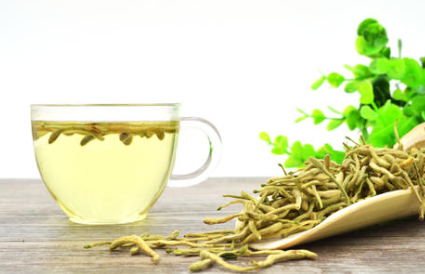
Summary
In summary, Honeysuckle is sweet and cold, with a fragrant aroma, clearing heat without harming the stomach, and dispersing without restraining evil. It can both disperse wind-heat and clear heat and detoxify, as well as clear heat from the Qi level and resolve blood-level heat toxins. Therefore, it can be applied to exterior heat, interior heat, Qi level heat, and blood level heat, making it a commonly used herb for wind-heat exterior syndrome, warm disease fever, abscesses and sores, rashes, sore throat, and heat toxin dysentery.

Forsythia
Forsythia is the Oleaceae plant’s dried fruit, which has a heart-like shape with two lobes joined together. If harvested when young, it has a slightly green surface, and this type is called Qing Qiao (青翘), which has many seeds and better medicinal properties.
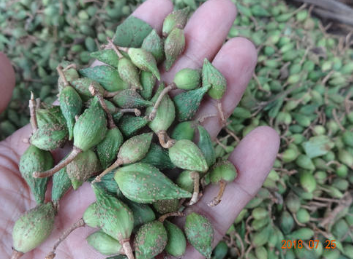
If harvested later, when the fruit has opened, the outer shell turns a yellowish color, and some seeds may have fallen out, leaving only the Forsythia shell, which is called Qiao Ke (连翘壳) or Huang Qiao (黄翘), which is of slightly lower quality.
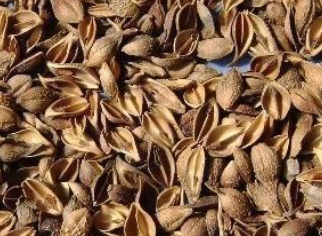
Forsythia and Honeysuckle have very similar effects and properties, and they are often used together in treating diseases. Forsythia clears heat and detoxifies, and can treat warm diseases at various stages:
In the Wei stage, it can both clear heat and detoxify, and disperse wind-heat;
In the Qi stage, it can clear heat and detoxify, and clear heat from the Qi level, but once heat enters the Ying and Blood levels, Forsythia does not have the cooling blood-clearing effect of Honeysuckle, so its efficacy is not as strong as that of Honeysuckle.
Forsythia clears heat and detoxifies, and can also treat heat toxin abscesses, as the swelling and pain of sores are related to the excess heat toxins in the heart channel, and Forsythia can clear the heart and reduce swelling and dissipate lumps, which is why it is known as the ‘sacred medicine for sores’.
Forsythia reduces swelling and dissipates lumps, and can treat phlegm-heat accumulation leading to scrofula and phlegm nodules, often combined with Xia Ku Cao (夏枯草) and Mu Li (牡蛎).
Forsythia clears the heart and promotes urination, and can treat dysuria, often combined with Che Qian Zi (车前子) and Bai Mao Gen (白茅根).
Forsythia can also disperse wind-heat, and can be used for wind-heat exterior syndrome or the initial stage of warm diseases, often combined with Honeysuckle.
The familiar VC Yin Qiao tablets primarily contain Honeysuckle and Forsythia.
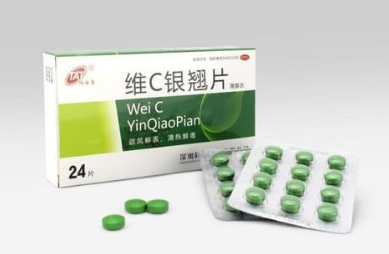
Summary
In summary, Forsythia is light and clear, able to penetrate both exterior and interior, excelling in clearing the heart and draining fire, dispersing wind-heat in the upper jiao, and also promoting the flow of Qi and blood to disperse blood stasis and Qi stagnation. It is used for various conditions such as wind-heat exterior syndrome, acute heat disease with fever and mental confusion, blood-heat rashes, abscesses and sores, scrofula, and tuberculosis. Because this herb is often used for abscesses and sores, it has historically been referred to as the ‘sacred medicine for sores.’
Finally, let’s compare Honeysuckle and Forsythia:
Both can clear heat and detoxify, and disperse wind-heat, treating wind-heat colds, warm diseases, abscesses and sores, rashes, etc.;
Honeysuckle is sweet and cold, leaning towards clearing exterior heat. It can also cool the blood and stop dysentery, treating heat toxin dysentery;
While Forsythia is bitter and cold, leaning towards clearing interior heat. It can also reduce swelling and dissipate lumps, treating scrofula and tuberculosis.
Today, I encourage everyone to learn through comparison, understanding when Honeysuckle and Forsythia should be used together, their respective effects and characteristics, as well as their similarities and differences.
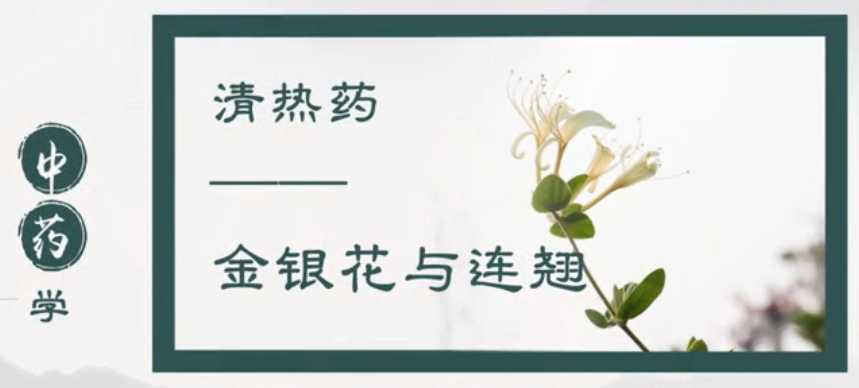
 END
END

Long press to recognize the QR code and follow Xile Liangyao
Discover the wonders of Traditional Chinese Medicine together, bringing TCM closer to life.
Article looks good, click here

